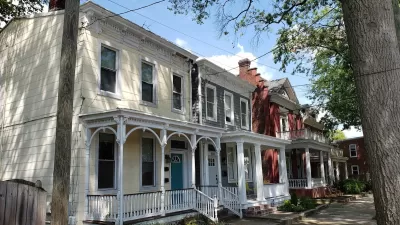A new report by the Center for Budget and Policy Priorities finds major flaws with property taxes in several states, and proposes a solution that could mitigate the least desirable consequences of limits to property tax increases.

Brian J. Charles shares the findings of a new report by the Center for Budget and Policy Priorities (CBPP) that issues a sharp critique of property tax caps.
The tax caps, which first became popular during the 1970s tax revolt and have since spread to 44 states plus the District of Columbia, have created fiscal stress for the states that adopted the limits. As a result, states have cut aid to cities and counties, and municipalities have become more reliant on sales taxes and fees that disproportionately hurt the poor and people of color.
The study examined property taxes in Michigan, Massachusetts, Oregon, and New York, explains Charles. The findings show evidence that the caps "strangle" funding for public education, "which the researchers see as a pathway for minority and low-income children to move up the socioeconomic ladder," while benefitting wealthy white homeowners, "because they have historically owned homes at a greater rate than people of color and on average own more valuable homes."
The Center for Budget and Policy Priorities (CBPP) includes a proposed solution to solve these issues in the report. "Right now, most states limit the annual increase in property taxes to 1.5 or 2.5 percent or the rate of inflation -- whichever number is lower. Setting the limit instead at whichever number is higher, the researchers say, would provide more cash for governments and make revenues more predictable," explains Charles.
For more on the property tax situation around the country, see also Planetizen coverage of the Lincoln Institute of Land Policy's annual "50-State Property Tax Comparison Study."
FULL STORY: The Downsides of Property Tax Caps

Planetizen Federal Action Tracker
A weekly monitor of how Trump’s orders and actions are impacting planners and planning in America.

The Simple Legislative Tool Transforming Vacant Downtowns
In California, Michigan and Georgia, an easy win is bringing dollars — and delight — back to city centers.

San Francisco's School District Spent $105M To Build Affordable Housing for Teachers — And That's Just the Beginning
SFUSD joins a growing list of school districts using their land holdings to address housing affordability challenges faced by their own employees.

In More Metros Than You’d Think, Suburbs are Now More Expensive Than the City
If you're moving to the burbs to save on square footage, data shows you should think again.

The States Losing Rural Delivery Rooms at an Alarming Pace
In some states, as few as 9% of rural hospitals still deliver babies. As a result, rising pre-term births, no adequate pre-term care and "harrowing" close calls are a growing reality.

The Small South Asian Republic Going all in on EVs
Thanks to one simple policy change less than five years ago, 65% of new cars in this Himalayan country are now electric.
Urban Design for Planners 1: Software Tools
This six-course series explores essential urban design concepts using open source software and equips planners with the tools they need to participate fully in the urban design process.
Planning for Universal Design
Learn the tools for implementing Universal Design in planning regulations.
Smith Gee Studio
City of Charlotte
City of Camden Redevelopment Agency
City of Astoria
Transportation Research & Education Center (TREC) at Portland State University
US High Speed Rail Association
City of Camden Redevelopment Agency
Municipality of Princeton (NJ)





























